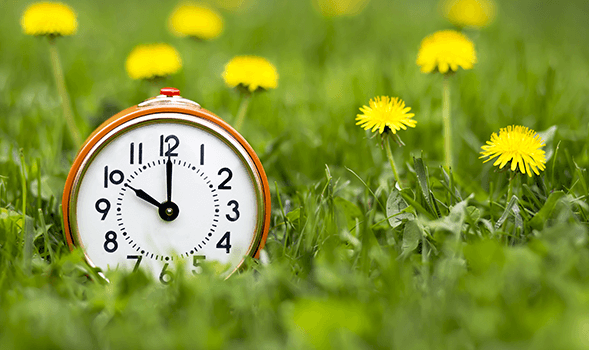March 17, 2021
Spring Ahead for Better Health

Daylight Savings Time! What a wonderful time! Spring on the way, more time for breathtaking hikes and rides, and warmer weather — what’s not to like? But it’s also a good time to remember the far-reaching effects of our circadian rhythms. These 24-hour rhythms are set in the hypothalamus of our brain, by the 20,000 neurons of our suprachiasmatic nucleus, under the control of oscillating levels of a protein called PER (for period). Circadian rhythms affect many of our physiological parameters, from body temperature to melatonin production and sleep to blood pressure to alertness to hormone release to performance to metabolism, and on and on. Having an internal clock with a circadian rhythm is something like having our own speed limit signs — it tells us when it is safest to eat, work, relax, sleep, etc.
Changes in our circadian rhythm can be stressful, for example, when traveling. You can help to reset your circadian clock rapidly by getting into the sunlight in your new destination when it is dark at your point of departure — so if you are traveling west, where the sun sets later, get some sun late in the day, and if you are traveling east, where the sun sets earlier, get some sun early in the morning. Taking some melatonin supports this resetting, as well.
Circadian rhythms exert a major effect on our response to food, which is why the Ayurvedic physicians — like Dr. Ram Rao — teach us to eat our major meal when the sun is at its zenith. The same meals eaten late in the evening contribute to obesity, so not only is it critical what we eat, but also when we eat. Thus, our abbreviated (<12 hour) eating window should be during daytime hours, not in the late evening, and especially not right before bed.
Trying to live counter to our circadian rhythms, with off-time eating, sleeping, and moving, increases risk for obesity, diabetes, hypertension, and cardiovascular disease — all risk factors for cognitive decline. We can use our circadian rhythms to our advantage by following our internal clocks for sleeping (and winding down to get ready for sleep), eating, working, relaxing, and living our lives, all in sync with our PER protein levels in our suprachiasmatic nuclei in our brains.
Happy Daylight Savings Time!




